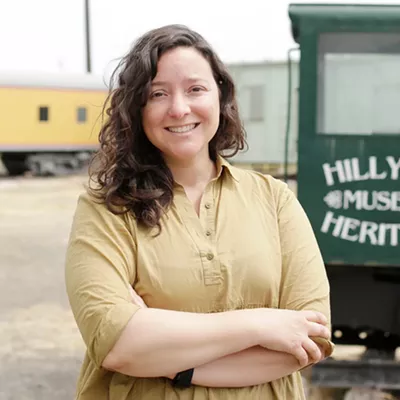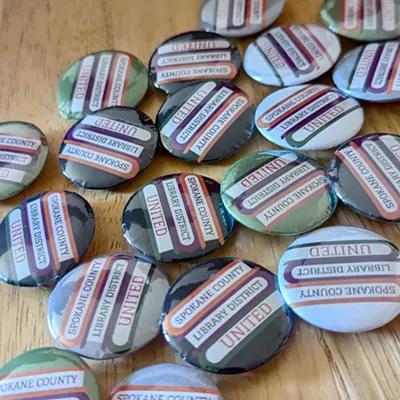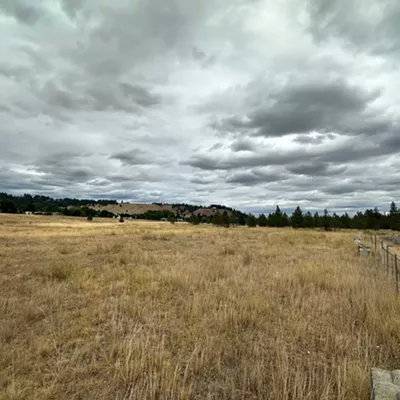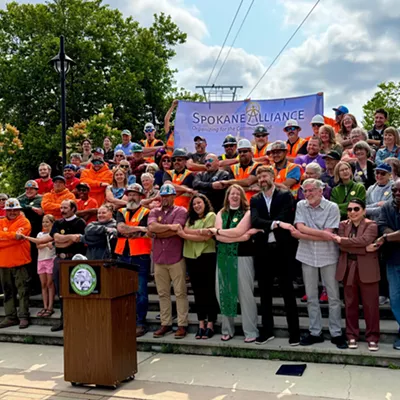The crowd members are on par with those at Seattle's waterfront most weekends except for one striking similarity. An unnatural number of these people are lean, muscular and sucking from water bottles as if they contain life itself.
These crowds are the result of the Ford Ironman Coeur d'Alene race happening Sunday, an event that's estimated to nearly double Coeur d'Alene's population for a few days. Some of those people will return throughout the year for vacations. Some buy homes in the area. And many share their discovery of North Idaho with friends and fellow athletes, convincing them to add Coeur d'Alene to their travel plans.
"It's such a significant visitor event," says Jonathan Coe, executive director of the Coeur d'Alene Chamber of Commerce. "We knew it would have an immediate economic impact. It's been an antidote to the Richard Butler image people had of us."
Nearly 2,500 athletes are registered for the race that starts with a 2.4-mile swim in Lake Coeur d'Alene, then transitions into a 112-mile bike ride and ends with a 26.2-mile run. They come from 40 states and 10 countries, including Singapore and Panama.
A 2003 study by the Spokane Regional Sports Commission placed Ironman's total economic impact on the Coeur d'Alene area at $4.23 million. That year, the race had nearly 900 fewer participants than it does this year.
"The simple addition of more athletes plus the fact that costs have gone up tells me the impact is well over $5 million a year now," Coe says.
Hotels and motels from the Spokane Valley to the Silver Valley sell out nine months before the race, and most won't reserve rooms for fewer than four days. Gatorade commercials featuring the Coeur d'Alene race run year round, narrated by nationally known sportscaster (and WSU alum) Keith Jackson.
"That's definitely a plus," Coe says.
& lt;span class= "dropcap " & I & lt;/span & ronman Coeur d'Alene's crowds have grown since the first race three years ago, partly because the course is so accessible to spectators. Every section is divided into two identical loops. Racers swim only a half mile out from Lake Coeur d'Alene's shore, staying in view of spectators, before returning to City Beach after half the swim. People crowd the beach and cheer as athletes run over the sand and enter the lake for their second lap of the swim course.
Cyclists bolt through a mile-long section of downtown four times -- twice in each direction. While spectators wait for their athletes, they shop, dine in downtown restaurants and indulge in their own workouts, walking or running over forested Tubbs Hill.
Runners follow the same downtown path lined with supporters before taking off along the Centennial Trail, a paved course along Lake Coeur d'Alene protected during the race from traffic.
"The course is very spectator-friendly," says Jim Wolfe, a Seattle athlete who watched Ironman Coeur d'Alene last year and will compete in the race this year. "You can see a lot more of the racers than in some races."
Wolfe, 23, is the former captain of the University of Washington swim team. He'd heard Coeur d'Alene's race was good for first-timers because it's not as crowded as some races. It's also a five-hour drive from his home. Those benefits plus an irresistible physical challenge motivated Wolfe to sign up.
Reed Sillers, owner of Speedy Reedy Triathlon Store in Seattle, did Ironman Coeur d'Alene twice. He's among dozens of western Washington triathletes grateful that Ironman North America chose Coeur d'Alene as a race site.
"The No. 1 attraction of the race for us is its proximity to Seattle," he says. "A lot of my customers elect to drive over a month or two before the race, pre-ride the course, check out the run, look at the swim. Proximity allows us to do that."
Ironman Coeur d'Alene also has boosted his business. His small shop along Seattle's Burke-Gilman Trail is one of two triathlon-specific stores in Seattle.
"More people in the area decide to do Ironman because the Coeur d'Alene race is available," Sillers says. "They train for a full year, come in and buy equipment, gear, nutritional products."
Mike Gaertner, owner of Vertical Earth Performance Sports in downtown Coeur d'Alene, sees hundreds of Ironman participants during race week. He caught the fever last year and is racing this year. Ironman is good for Coeur d'Alene, he says.
"The exposure of Coeur d'Alene in the national community is great," he says. "I know a few cases of people who actually moved here after coming to the race. It gets healthy, fit people interested in Coeur d'Alene."
Just one more Ironman perk, says Coe.
"I've heard stories of athletes buying homes and second homes here. Over 10 home purchases are associated with Ironman," he says. "We always talk about Ironman when we talk about the community. It's been good to us."
The Ford Ironman Coeur d'Alene begins with a mass start of nearly 2,500 swimmers from CdA's City Beach on Sunday, June 25, at 7 am. (The pro women start at 6:25 am.) Finishers will be crossing the line from approximately 3:30 pm until midnight. Visit www.ironmancda.com.















